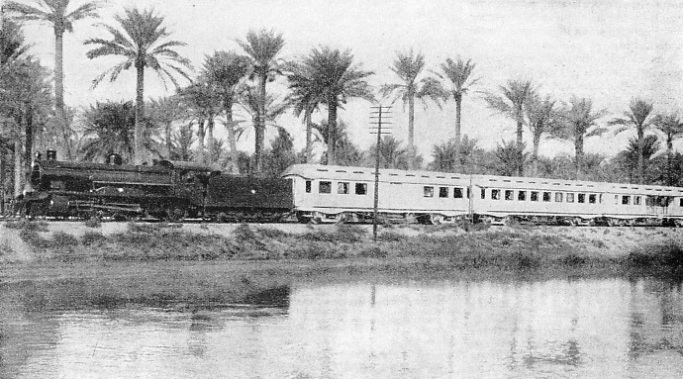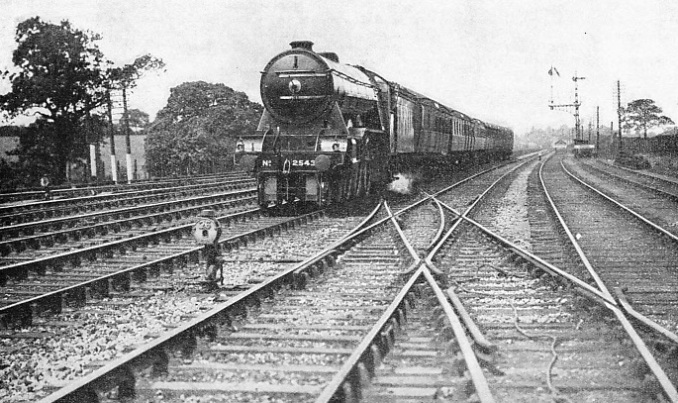
© Railway Wonders of the World 2012-


Part 41


Part 41 of Railway Wonders of the World was published on Friday 8th November 1935.
This issue contained a photogravure supplement on British Locomotives. This formed an article in itself, and appeared on pages 1299-1302.
The Cover
This week’s cover shows the famous LNER cruising train, the “Northern Belle”, near Ripon, Yorkshire, and headed by a 2-6-0 class K3 engine.
The “Northern Belle” was previously illustrated on the cover of part 26.
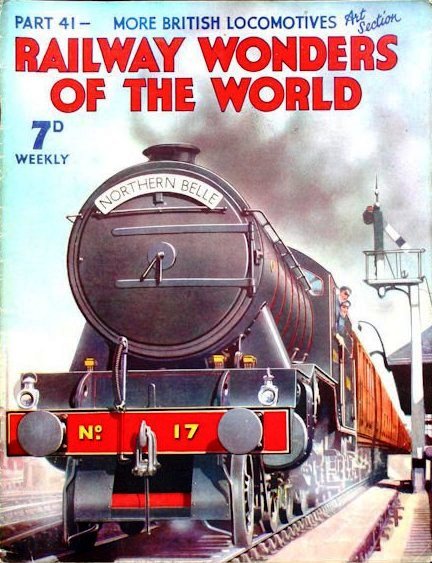
Railway Curiosities (Part 2)
This part considers the Behr monorail, the gyroscope monorail, the ship railway, smokeless locomotives, runaway engines, obstructive tactics at Havant, and unusual goods traffic. Concluded from part 40.
(Pages 1285-1290 )
Estonia and Lithuania
Estonia is one of the countries which gained independence as a result of the War of 1914-18. Fares on the railways of Estonia are claimed to be among the most reasonable in Europe. This is due largely to the development of the native oil shale industry, which provides a a cheap form of fuel. The pioneer railway in that country was built under the Russian Imperial authority, and was laid between Tallinn, the capital, and Narva. This line now forms part of the direct route between the capital and Leningrad. Tallin is also linked by rail with the Latvian capital, Riga. Although one of the smaller European powers, Estonia has, quite apart from international traffic, an efficient rail system for home requirements. The interesting system of another important Baltic state - Lithuania - is also described in this chapter.
(Pages 1292-1298 )
An Estonian Diesel Railcar
ON LOCAL ESTONIAN LINES Diesel-driven rail-cars have been introduced by the State Railways Administration. These rail-cars augment the ordinary train services and are capable of fairly high speeds.
(Page 1297)
British Locomotives
THE BRAMHAM MOOR” (top) is one of the LNER’s latest
4-4-0 express passenger locomotives, belonging to the “Hunt” class. These engines are similar to the D49 “Shires” with the exception that they are equipped with R.C. poppet valve gear. Cylinders measure 17 in by 26 in, diameter of driving wheels is 6 ft 8 in, and the boiler pressure is 180 lb per sq in. The heating surface, including superheater, totals 1,669½ sq ft, and the tractive effort is 21,556 lb.
(Middle) “JUTLAND” a 4-4-0 express engine of the “Director” class. The locomotives of this class have 20 in by 26 in cylinders, coupled wheels of 6 ft 9 in diameter, and a boiler pressure of 180 lb per sq in. The length over buffers is
58 ft 11½ in and weight of the engine 61 tons 3 cwt.
(Bottom) Among the largest express passenger locomotives in Great Britain are the LNER three-cylinder “Pacifics” represented by “Felstead”. Striking features are the large boiler and firebox, which has an area of 215 sq ft. The total heating surface is 3,455 sq ft, and the latest engine of the type have a boiler pressure of 220 lb.
(Page 1299)
Engines on Holiday
A PRIZE WAS OFFERED for the best decorated engine on an official excursion of the former London Brighton and South Coast Railway in 1898. The rival running sheds of Battersea and New Cross competed. In addition to decorations on the locomotives, the coal was whitewashed, as was always done for Royal trains. “Allen Sarle” (top) represented Battersea, and “Harry Fletcher” (bottom) was from New Cross. The centre picture shows the two engines side by side. “Allen Sarle” was one of the well-known 0-4-2 express locomotives designed by W. Stroudley. Thirty-six of the type were built at Brighton between 1882 and 1891. The most famous was “Gladstone”. The other locomotive, “Henry Fletcher”, had the more normal 4-4-0 wheel arrangement.
(Page 1291)
British Locomotives - 2
ON THE GREAT WESTERN RAILWAY. (Top) “Hanbury Hall”. The “Hall” class 4-6-0 engines, used for mixed traffic, have two cylinders 18½ in by 30 in, and a total heating surface, including superheater, of 2,104 sq ft. Boiler pressure is 225 lb and tractive effort 27,275 lb. The coupled wheels have a diameter of 6 ft.
A “CASTLE” CLASS ENGINE (middle), used for certain of the fastest express services on the GWR. This engine has four cylinders 16 in by 26 in, a total heating surface of 2,312 sq ft, coupled wheels
6 ft 8½ in diameter, boiler pressure of 225 lb, and a tractive effort of 31,625 lb.
ONE OF THE FAMOUS “KING” CLASS engines which work the principal express services to and from the West of England is shown below. These engines have a 6 ft 6 in coupled wheels, a boiler pressure of 250 lb, and four cylinders 16¼ in by 28 in.
(Page 1300)
British Locomotives - 3
THE SOUTHERN RAILWAY uses 4-4-0 “Schools” class engines on lines where the route does not permit the running of larger and heavier locomotives. “Rugby” (top) has three cylinders 16½ by
26 in, 6 ft 7 in driving wheels, and a boiler pressure of 220 lb per sq in. The weight of the engine and tender in working order is 109 tons 10 cwt. Tractive effort is 24,640 lb.
“LORD NELSON” (middle) a Southern Railway express locomotive, and the first of the class of that name. This powerful engine has four cylinders 16½ in by 26 in. Driving wheels have a diameter of 6 ft 7 in and the engine and tender weigh, in working order, 140 tons
5 cwt.
One of the “King Arthur” class 4-6-0 locomotives. This engine, “Sir Uwaine” has two cylinders 20½ in by 28 in,
6 ft 7 in driving wheels, and 200 lb pressure. The weight of the engine and tender, in working order, is 138 tons
10 cwt.
(Page 1301)
British Locomotives - 4
A TURBINE-DRIVEN 4-6-2 LOCOMOTIVE introduced in 1935 by the LMS. Propulsion by cylinders and the normal reciprocating motion has been replaced by a turbine drive. The locomotive has a 2,000 hp non-condensing multi-stage forward turbine, using steam at 250 lb per sq in and a reverse turbine of the impulse type. The turbine drives the leading coupled axle by a train of gears. Steam to the main turbine is brought from the boiler to a steam chest formed as a steel casing. This steam chest contains six control valves operated from the cab. From the chest, steam is taken by pipes to groups of nozzles in the high-pressure end of the turbine casing, and each nozzle group is controlled by one of the six valves. Power is developed in the turbine, and the speed of the engine increased by opening these valves. The weight of the locomotive has been kept down despite the extra load of the turbines, and its total weight in working order is only 109 tons. Driving wheels are of 6 ft 6 in diameter. The boiler has a total heating
surface of 2,967 sq ft, and the area of the fire-grate area is 45 sq ft. The tender has a coal capacity of 9 tons and can carry 4,000 gallons of water. Together, the turbine engine and its tender weigh 163 tons 13 cwt, and have a total length of 74 ft 4 ¼in.
(page 1302)
Carlisle Station
Formerly the hub of seven different companies, the Citadel Station was jointly owned by the Caledonian and London and North Western Railways. It is now owned by the LMS and served also by the LNER. Though little traffic begins there, a large amount of passenger traffic from such cities as London, Leeds, Glasgow and Edinburgh passes through. This traffic includes many famous expresses, such as the “Royal Scot”, the “Thames-Forth Express”, and the “Midday Scot”. There is only one regular passenger train throughout the whole year which runs through the station without stopping - the “Night Scot”. Apart from the lay-out at the Citadel Station and the working of the various trains through, this chapter also includes details of the main-line routes in the vicinity, and the chief locomotives to be seen at Carlisle. It is, strangely enough, the one station in Great Britain where the “Pacific” type locomotives of the LMS and of the LNER can be seen side by side. This is the sixth article in the series Famous Railway Centres.
(Pages 1303-1309 )
Viaduct Yard, Carlisle
FREIGHT TRAINS rarely pass through the Citadel Station at Carlisle. Goods lines are carried to the west of the passenger station and rejoin the main line three-quarters of a mile to the north. Here are the Viaduct Yard and a section of the goods line at Carlisle.
(Page 1308)
In the Nile Valley
The first railway on the African continent was laid in Egypt between Alexandria and Cairo; a section of this was opened in 1854. To-day the Egyptian State Railways own some 2,195 miles of standard gauge track and a number of auxiliary lines. They serve chiefly the Nile Valley and the Nile Delta; they also provide communication between the Sudan and the Mediterranean, as there is direct connexion with the Sudan Government services. The principal freight carried by the Egyptian railways is cotton, the staple product of that country. The Egyptian Delta Light Railways, a narrow-gauge system, serves the towns of the Delta and links up with the major system.
(Pages 1310-1315 )
Luxury Coaches of the Egyptian State Railways
LUXURY COACHES for special functions and state occasions are maintained by the Egyptian State Railways. This picture shows the train used by the King of Egypt and his suite.
(Page 1313)
Switches and Crossings
As mentioned in a previous chapter on welding, the maximum stress on rails is at crossings, and among the most expensive parts of the track to construct are the switches and crossings. An aerial view of any large terminus - such as that shown on page 171 of the lines outside Cannon Street Station, London - will convey to the uninitiated something of the problems facing the permanent way officials. This chapter by Cecil J. Allen is a detailed and authoritative account of switches and crossings. Many interesting facts are given as to how trains are safeguarded when passing at, say, sixty miles an hour, over gaps in the rails. Electricity plays an important part here. In most switches in main running lines electrical detectors are fixed. These detectors can check instantly whether the points have been correctly thrown. If not, devices locking automatically prevent the moving of the signal arm which allows the train to pass over the switch in question. The complexity of construction, the perfect precision of the network of lines outside a big station, is, indeed a railway wonder that few of us have, at some time or other, failed to admire. The article concludes in part 42.
(Page 1316)
A Single Slip
AN EXPRESS OF THE LNER is seen running at speed, headed by “Pacific” locomotive No. 2543 “Melton”. In the foreground is seen a “single slip” - a diamond crossing of two tracks with slip connexion between them.
(Page 1316)
Contents of Part 41
Railway Curiosities (Part 2)
Engines on Holiday (photo-feature)
Estonia and Lithuania
British Locomotives (photogravure supplement)
Carlisle Station
In the Nile Valley
Switches and Crossings (Part 1)
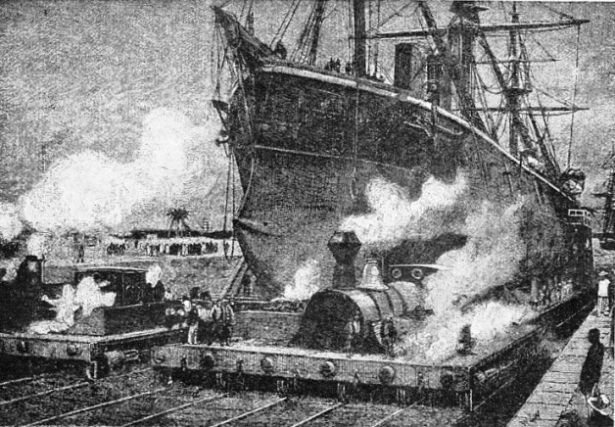
The “Ship Railway”
THE “SHIP RAILWAY” proposed by an American inventor for transportation across the isthmus of Panama before the building of the canal. This “ship railway” was to have had twelve rails, on which it was proposed to run a gigantic moving slip-way carrying the ship. The vessels were to have been manoeuvred on the slip-way at high tide.
Another account of this proposal appears in the Railway Magazine for May 2008, whilst a real Overland Canal railway was constructed in East Prussia (now Poland), as described in
part 6 of Wonders of World Engineering.
(Page 1290)
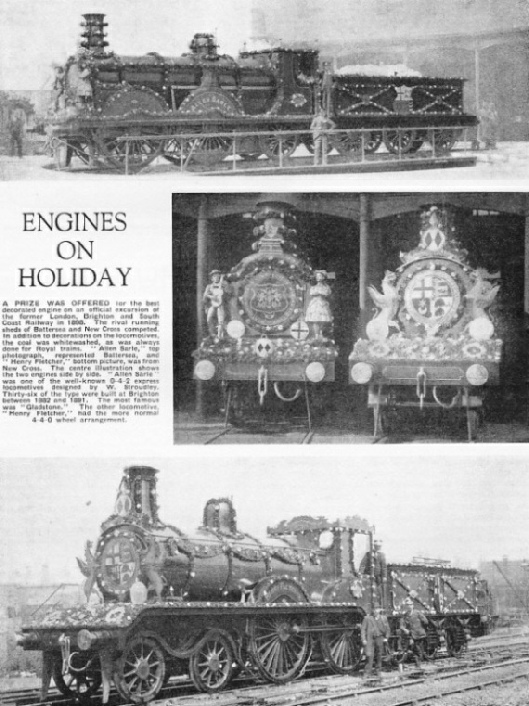
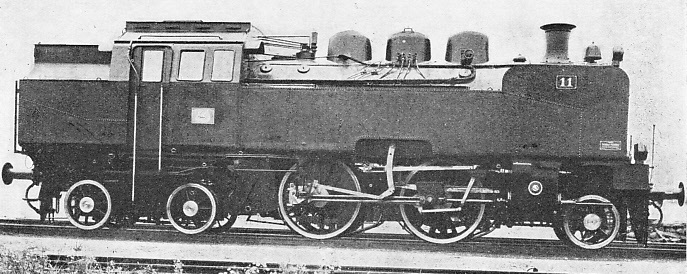
A 2-4-4 Tank for Lithuania
BUILT FOR LITHUANIA. An unusual 2-4-4 tank locomotive built at Prague by the Skoda works. The Lithuanian State Railways have in operation on their lines some 245 locomotives. Nearly 170 of these are built to the standard gauge.
(Page 1296)
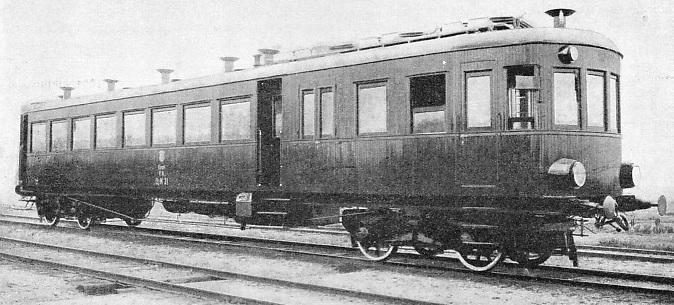
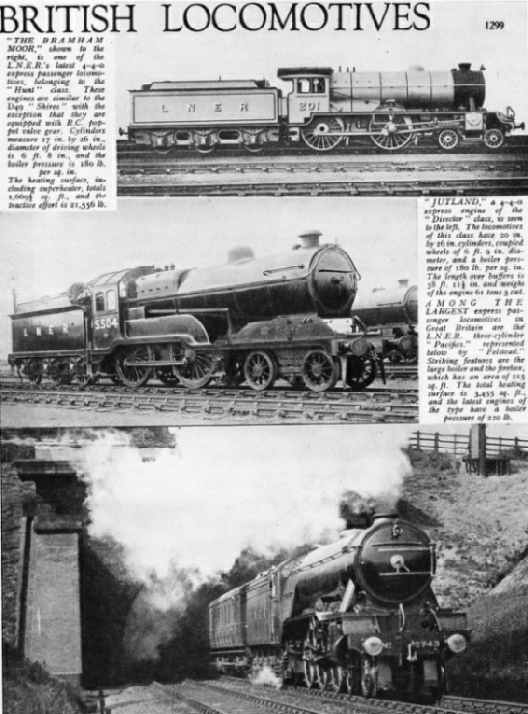
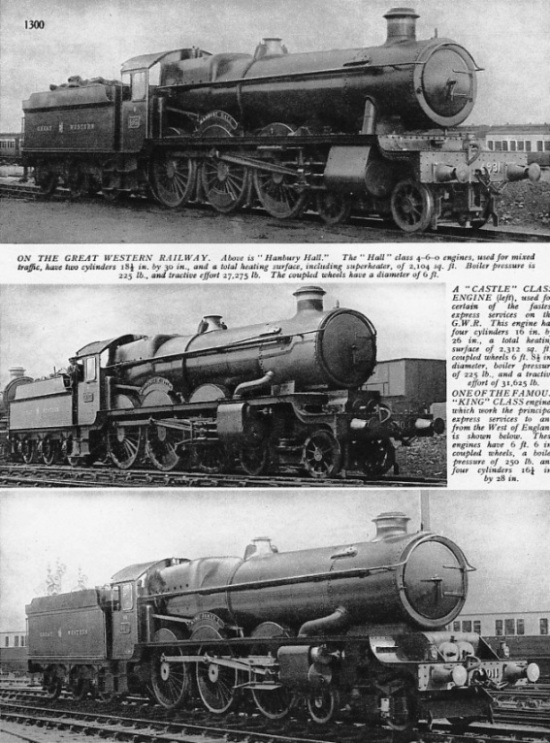
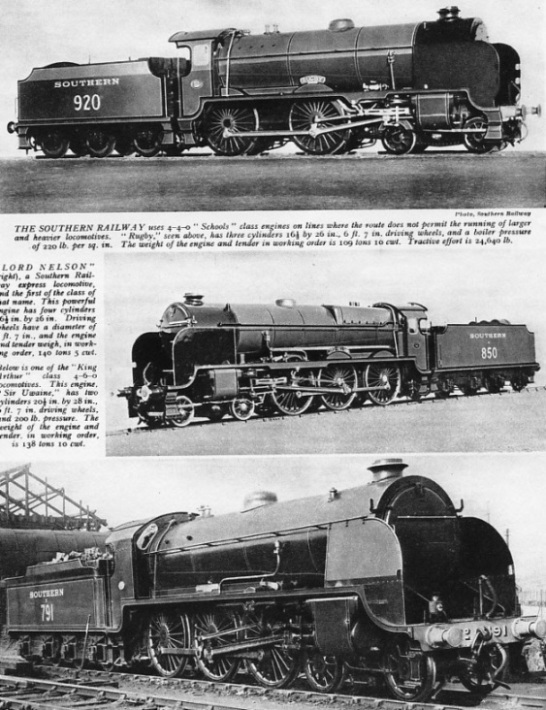
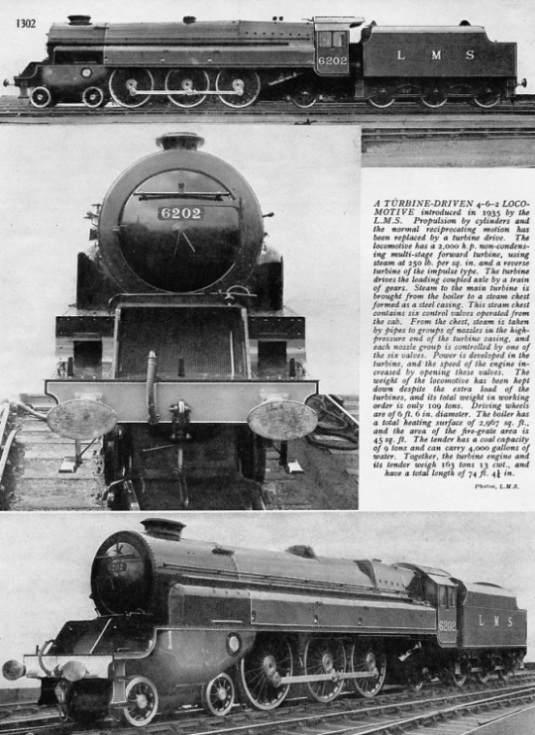
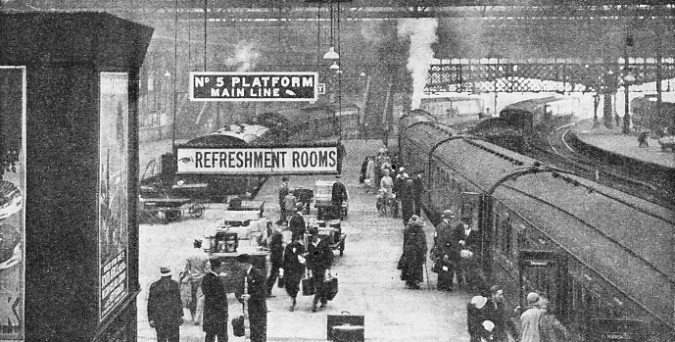
Carlisle Citadel Station
THE CITADEL STATION at Carlisle was formerly the meeting place of seven British railways, and was jointly owned by the Caledonian Railway and the LNWR. To-day the station is LMS property, although it is served also by the LNER. The above photograph illustrates the main line up platform. On the left are the bays used by the LNER trains for Newcastle and by local Midland Division trains for the Appleby direction.
(Page 1303)
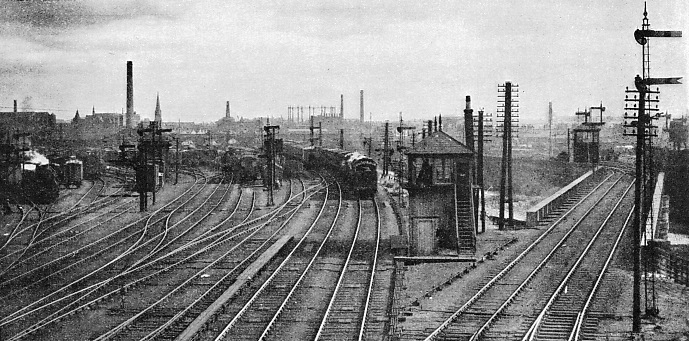
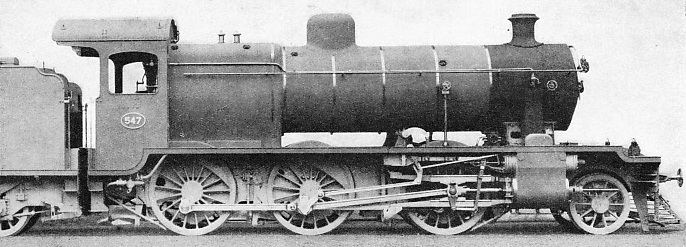
2-6-0 of the Egyptian State Railways
MIXED TRAFFIC LOCOMOTIVE built for the Egyptian State Railways by the North British Locomotive Company, Ltd. This 2-6-0 engine has cylinders 21 in by 26 in, and coupled wheels 5 ft 6¾ in diameter. The boiler pressure is 160 lb per sq in, total heating surface 1,909 sq ft, and tractive effort 20.610 lb. The weight of the engine, in working order, is 66 tons 18 cwt, and the weight of the tender loaded is 57 tons 15 cwt.
(Page 1311)
